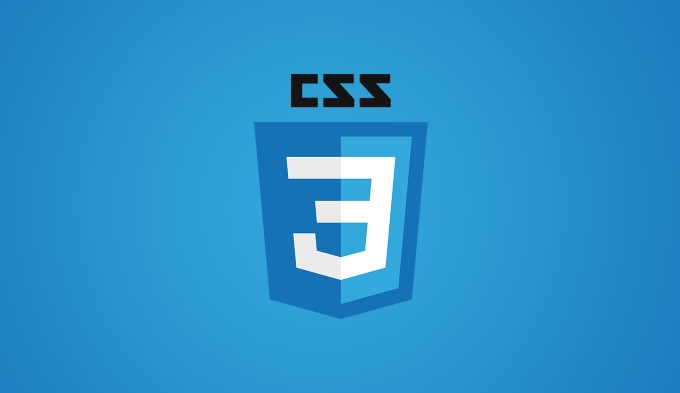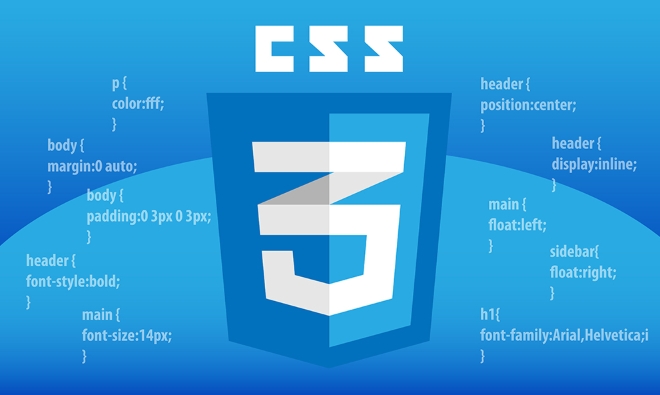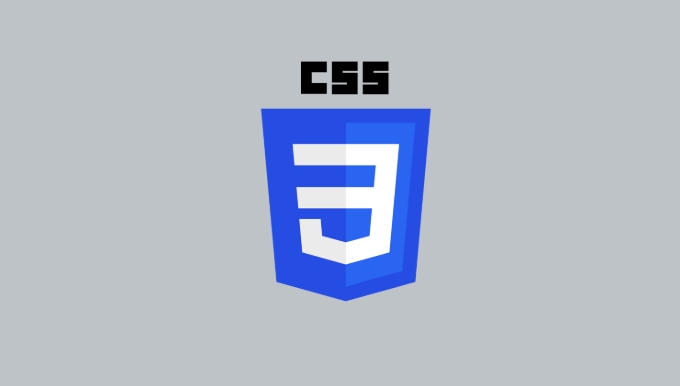 Web Front-end
Web Front-end
 CSS Tutorial
CSS Tutorial
 Implementing CSS Dark Mode using media queries and custom properties
Implementing CSS Dark Mode using media queries and custom properties
Implementing CSS Dark Mode using media queries and custom properties
Jul 11, 2025 am 02:31 AMTo implement dark mode, there are three methods: 1. Use prefers-color-scheme media to query and detect system preferences and automatically apply dark styles; 2. Use CSS custom attributes to uniformly manage color themes, improve maintenance efficiency and facilitate subsequent expansion; 3. Add buttons to manually switch themes through JavaScript, and save user selections in combination with localStorage. Combining these three methods can achieve a complete solution that prioritizes response to system settings and supports user-defined customization.

Implementing Dark Mode has now become a standard feature in modern web design. If you want your website to automatically switch topics based on user's system preferences, or let users manually select dark/light modes, using CSS media queries and custom properties is an easy and effective way to do this.

1. Use prefers-color-scheme media query to detect user preferences
CSS provides a very practical media feature: prefers-color-scheme , which can detect whether the user's operating system has dark or light colors set.

@media (prefers-color-scheme: dark) {
body {
background-color: #121212;
color: #eaeaea;
}
}After writing this way, if the user enables the system's dark mode, the page will apply the dark style you set. The benefit of this approach is that it does not require any JavaScript , pure CSS implementation, and is performance-friendly.
Note: This method can only respond to the user's system settings and cannot allow users to manually switch topics within the web page.
2. Use CSS custom properties (variables) to uniformly manage color themes
For more flexible control of styles in different modes, it is recommended to use CSS variables to centrally define color values.
:root {
--bg-color: #ffffff;
--text-color: #333333;
}
@media (prefers-color-scheme: dark) {
:root {
--bg-color: #121212;
--text-color: #eaeaea;
}
}
body {
background-color: var(--bg-color);
color: var(--text-color);
}The advantages of this method are:
- Unified style management, convenient maintenance
- When switching mode, you only need to modify and change the value, and you do not need to repeat the style.
- It is easier to manually switch themes in combination with JS.
3. Add button to manually switch themes (optional)
If you want users to choose their own theme on the page, you can dynamically modify CSS variables through JavaScript.
Add toggle button in HTML:
<button id="theme-toggle">Switch theme</button>
Example of JS control logic:
const toggleButton = document.getElementById('theme-toggle');
toggleButton.addEventListener('click', () => {
const currentTheme = document.documentElement.getAttribute('data-theme');
if (currentTheme === 'dark') {
document.documentElement.setAttribute('data-theme', 'light');
localStorage.setItem('theme', 'light');
} else {
document.documentElement.setAttribute('data-theme', 'dark');
localStorage.setItem('theme', 'dark');
}
});Then define the corresponding topic variable in CSS:
:root[data-theme="light"] {
--bg-color: #ffffff;
--text-color: #333333;
}
:root[data-theme="dark"] {
--bg-color: #121212;
--text-color: #eaeaea;
}This will enable the dual mechanism of "priority response system settings to support manual switching".
Tips: You can read the user's previous selection and save it to
localStorage, and directly apply their preferred theme the next time you visit.
Basically that's it. Through media query and judging system preferences, using CSS variables to uniformly manage colors, and adding JS manual switching capabilities, a complete and lightweight dark mode solution can be achieved. What is not complicated but easy to ignore is the details of variable naming and state persistence. If you are not careful, it may affect the experience.
The above is the detailed content of Implementing CSS Dark Mode using media queries and custom properties. For more information, please follow other related articles on the PHP Chinese website!

Hot AI Tools

Undress AI Tool
Undress images for free

Undresser.AI Undress
AI-powered app for creating realistic nude photos

AI Clothes Remover
Online AI tool for removing clothes from photos.

Clothoff.io
AI clothes remover

Video Face Swap
Swap faces in any video effortlessly with our completely free AI face swap tool!

Hot Article

Hot Tools

Notepad++7.3.1
Easy-to-use and free code editor

SublimeText3 Chinese version
Chinese version, very easy to use

Zend Studio 13.0.1
Powerful PHP integrated development environment

Dreamweaver CS6
Visual web development tools

SublimeText3 Mac version
God-level code editing software (SublimeText3)

Hot Topics
 What is Autoprefixer and how does it work?
Jul 02, 2025 am 01:15 AM
What is Autoprefixer and how does it work?
Jul 02, 2025 am 01:15 AM
Autoprefixer is a tool that automatically adds vendor prefixes to CSS attributes based on the target browser scope. 1. It solves the problem of manually maintaining prefixes with errors; 2. Work through the PostCSS plug-in form, parse CSS, analyze attributes that need to be prefixed, and generate code according to configuration; 3. The usage steps include installing plug-ins, setting browserslist, and enabling them in the build process; 4. Notes include not manually adding prefixes, keeping configuration updates, prefixes not all attributes, and it is recommended to use them with the preprocessor.
 CSS tutorial for creating a sticky header or footer
Jul 02, 2025 am 01:04 AM
CSS tutorial for creating a sticky header or footer
Jul 02, 2025 am 01:04 AM
TocreatestickyheadersandfooterswithCSS,useposition:stickyforheaderswithtopvalueandz-index,ensuringparentcontainersdon’trestrictit.1.Forstickyheaders:setposition:sticky,top:0,z-index,andbackgroundcolor.2.Forstickyfooters,betteruseposition:fixedwithbot
 CSS tutorial for creating loading spinners and animations
Jul 07, 2025 am 12:07 AM
CSS tutorial for creating loading spinners and animations
Jul 07, 2025 am 12:07 AM
There are three ways to create a CSS loading rotator: 1. Use the basic rotator of borders to achieve simple animation through HTML and CSS; 2. Use a custom rotator of multiple points to achieve the jump effect through different delay times; 3. Add a rotator in the button and switch classes through JavaScript to display the loading status. Each approach emphasizes the importance of design details such as color, size, accessibility and performance optimization to enhance the user experience.
 CSS tutorial focusing on mobile-first design
Jul 02, 2025 am 12:52 AM
CSS tutorial focusing on mobile-first design
Jul 02, 2025 am 12:52 AM
Mobile-firstCSSdesignrequiressettingtheviewportmetatag,usingrelativeunits,stylingfromsmallscreensup,optimizingtypographyandtouchtargets.First,addtocontrolscaling.Second,use%,em,orreminsteadofpixelsforflexiblelayouts.Third,writebasestylesformobile,the
 How to create an intrinsically responsive grid layout?
Jul 02, 2025 am 01:19 AM
How to create an intrinsically responsive grid layout?
Jul 02, 2025 am 01:19 AM
To create an intrinsic responsive grid layout, the core method is to use CSSGrid's repeat(auto-fit,minmax()) mode; 1. Set grid-template-columns:repeat(auto-fit,minmax(200px,1fr)) to let the browser automatically adjust the number of columns and limit the minimum and maximum widths of each column; 2. Use gap to control grid spacing; 3. The container should be set to relative units such as width:100%, and use box-sizing:border-box to avoid width calculation errors and center them with margin:auto; 4. Optionally set the row height and content alignment to improve visual consistency, such as row
 How to center an entire grid within the viewport?
Jul 02, 2025 am 12:53 AM
How to center an entire grid within the viewport?
Jul 02, 2025 am 12:53 AM
To make the entire grid layout centered in the viewport, it can be achieved by the following methods: 1. Use margin:0auto to achieve horizontal centering, and the container needs to be set to set the fixed width, which is suitable for fixed layout; 2. Use Flexbox to set the justify-content and align-items properties in the outer container, and combine min-height:100vh to achieve vertical and horizontal centering, which is suitable for full-screen display scenarios; 3. Use CSSGrid's place-items property to quickly center on the parent container, which is simple and has good support from modern browsers, and at the same time, it is necessary to ensure that the parent container has sufficient height. Each method has applicable scenarios and restrictions, just choose the appropriate solution according to actual needs.
 What is feature detection in CSS using @supports?
Jul 02, 2025 am 01:14 AM
What is feature detection in CSS using @supports?
Jul 02, 2025 am 01:14 AM
FeaturedetectioninCSSusing@supportschecksifabrowsersupportsaspecificfeaturebeforeapplyingrelatedstyles.1.ItusesconditionalCSSblocksbasedonproperty-valuepairs,suchas@supports(display:grid).2.Thismethodensuresfuturecompatibilityandavoidsrelianceonunrel
 Addressing CSS Browser Compatibility issues and prefixes
Jul 07, 2025 am 01:44 AM
Addressing CSS Browser Compatibility issues and prefixes
Jul 07, 2025 am 01:44 AM
To deal with CSS browser compatibility and prefix issues, you need to understand the differences in browser support and use vendor prefixes reasonably. 1. Understand common problems such as Flexbox and Grid support, position:sticky invalid, and animation performance is different; 2. Check CanIuse confirmation feature support status; 3. Correctly use -webkit-, -moz-, -ms-, -o- and other manufacturer prefixes; 4. It is recommended to use Autoprefixer to automatically add prefixes; 5. Install PostCSS and configure browserslist to specify the target browser; 6. Automatically handle compatibility during construction; 7. Modernizr detection features can be used for old projects; 8. No need to pursue consistency of all browsers,






